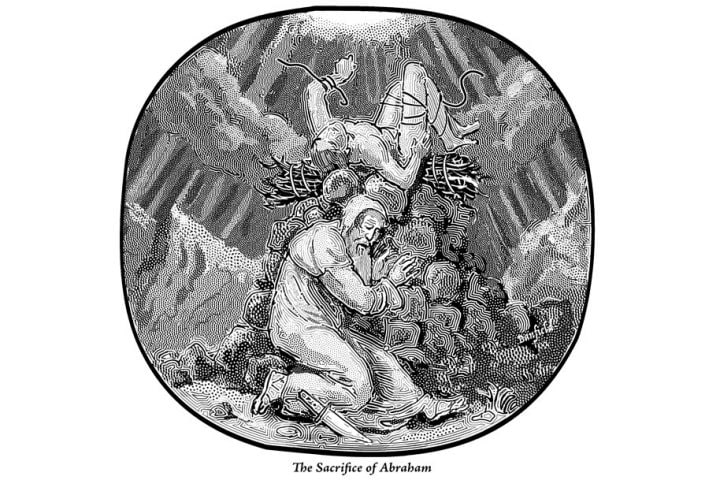Books Reviewed
The anti-federalists were America’s original populists, enriching the new constitutional order with their lively spirt of dissent. But no one today claims them as inspiration. Though essential actors in the grand drama in which the Constitution was debated, defended, and ratified, their contributions were overshadowed by the brilliant response of their adversaries. In criticizing the Constitution, they defended their own understanding of federalism, yet their opponents preemptively claimed that term for themselves.
Michael J. Faber’s An Anti-Federalist Constitution: The Development of Dissent in the Ratification Debates is an ambitious, erudite study of the Anti-Federalists on their own terms. Faber, a professor of political science at Texas State University, presents the Anti-Federalists as an opposition movement whose overlapping criticisms of the Constitution gradually coalesced into an alternative national vision.
The ratification debates, he observes, were “the most contentious and divisive war of words in the history of the United States.” The Federalists took the initiative, emerging from the secretive Philadelphia convention in September 1787 with a concrete national proposal. Anti-Federalists were left to voice various localized objections or defend a status quo that virtually everyone recognized as a failure. “Cultural capital” was overwhelmingly on the Federalists’ side—only 12 of the nearly 100 American newspapers were willing to publish essays criticizing the proposed Constitution. And the Federalists were not above using underhanded tactics and heavy-handed moralizing to suppress dissent. They tried to dismiss opponents of the Constitution as not simply wrong but corrupt and disreputable. Several states ratified the Constitution almost immediately, and the entire process appeared headed for a quick and quiet conclusion. But formidable dissent soon developed, especially in crucial states like Virginia, Massachusetts, and New York. Despite their best efforts, the Federalists found themselves in a dog fight.
It’s difficult to generalize about the ratification process. Each state debated ratification separately, and each had its own reasons for favoring or opposing the Constitution. Compounding the difficulty is the perennial problem of accurately describing political divisions in which people took ideas seriously, without neglecting inevitable considerations of class, status, and personal interest. In a way familiar to anyone who has followed contemporary divisions over Donald Trump, the social divisions animating ratification were both obvious and elusive.
* * *
Charles Beard’s An Economic Interpretation of the Constitution of the United States (1913) was the first major scholarly work to present ratification as a class struggle. Financial interests that stood to gain from a stronger federal government faced off against small farmers and debtors victimized by those same interests. Until recently most scholars rejected Beard’s interpretation as both crudely reductive and empirically false. Yet his emphasis on elite economic motives seems sophisticated compared with today’s fashionable scholarship interpreting the Constitution as little more than a sop to slaveholders.
Although the language of class antagonism runs through the debates, a simple division between rich and poor is misleading. Many Anti-Federalists were rich; most tradesmen, hard hit by the postwar depression, supported the Constitution. A division between agriculturally and commercially oriented Americans is closer to the mark, but fails to account for the autonomous power of ideas. The ratification debates tapped into powerful ideological currents, the same ones that had driven the colonies to revolt in the first place, such as belief in a fundamental conflict between court and country, or rulers and ruled. These ideas could express underlying social and class divisions—especially between a well-educated “natural aristocracy” and ordinary citizens—but were also fundamental to how Americans understood their world.
Faber identifies three distinct strains of Anti-Federalist thought: “Rights Anti-Federalism,” concerned with the rights of individuals, “Power Anti-Federalism,” concerned with protecting state governments from a consolidated national government, and “Democratic Anti-Federalism,” concerned with abolishing barriers to the people’s direct rule. These crucial conceptual distinctions carried different weight among different groups. States with long histories, like Massachusetts, tended to be more jealous of their communal identity than newer states like Georgia. Southerners and westerners tended to be more fixated on defending their rights as individuals. And though the caprices of post-Revolutionary state legislatures taught the Federalists that representatives could be as tyrannical as kings, other Americans, especially western farmers, stubbornly resisted that conclusion. These distinctions easily blended in practice—a consolidated national government was sure to usurp all power from the states, destroy the democratic rights of the people, and thereby deprive individuals of the protections on which liberty depended.
* * *
Though his account shows a sure grasp of the big ideas at stake, Faber is much less adept at showing how “events and strategies shaped and changed those ideas.” Anti-Federalists never formulated a single alternative national program around which ratification’s opponents could rally. His attempt to identify an unstated but coherent opposition consensus culminates in a misguided final chapter that presents a counterfactual “Anti-Federalist Constitution.” Heavily footnoted with references and explanations, Faber’s counterfactual shows both his profound grasp of Anti-Federalists’ ideas and his careless indifference to the historical reality in which those ideas were expressed.
The three-fifths compromise, for example, is replaced in this Anti-Federalist Constitution by a provision that counts only free persons for representation. Yet the same counterfactual, in the same section, gives each Southern state the same proportion of representatives for the first Congress as the actual Constitution. For this version to be acceptable, the slave population would need to be evenly distributed throughout the Union.
Explicit counterfactuals are often valuable, but Faber’s misconstrues the very nature of Anti-Federalist opposition. The framers emerged from the Philadelphia convention with no illusions that their work was perfect. They were united only by the conviction that no better alternative was possible. Everyone who signed the Constitution, to a man, could have imagined a better version to suit himself and his own constituency. They did not need the Anti-Federalists to help them identify its flaws. But they benefited immensely from the goad the Anti-Federalists supplied. The most formidable attack on the Constitution, in New York State, occasioned The Federalist—the nation’s greatest contribution to political thought.
Facing a crisis in which their very existence was at stake, the American people argued in earnest about the terms that bound them. The result was neither paralysis nor bloodshed but a glorious example of deliberative self-government. Americans’ almost instantaneous reverence for their Constitution stemmed from their perception of this achievement. They had re-established the boundaries of state power without imposing them by force. “The sovereignty of the people” was the creed of revolutionaries throughout the world, but Americans alone managed to embody that ideal in the process of constituting the fundamental law of their nation.




